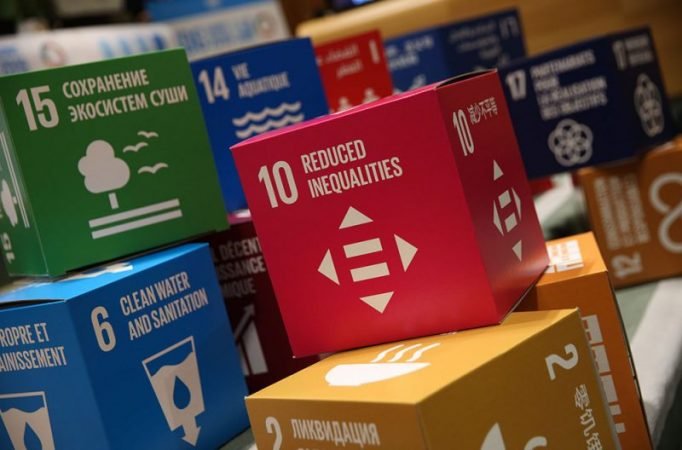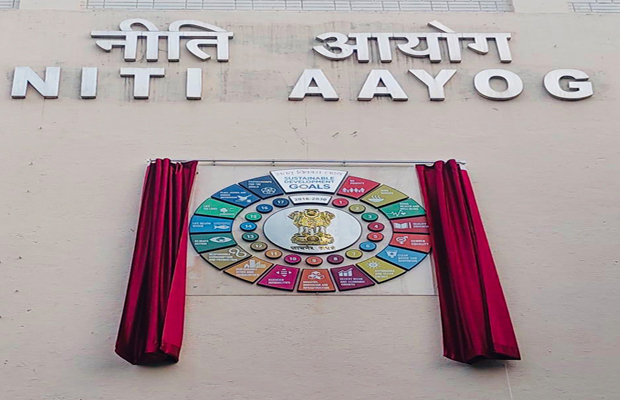MDGs to SDGs: Accelerating the development agenda

There has never been a more momentous time in history where so many of us have the power to change and transform the world. We must not let this opportunity go to waste at any cost.
The above statement aptly underlines the significance of the development goals adopted by United Nations in the beginning of 21st century, to bring humanity together in its collective pursuit for a more better, secure, sustainable and inclusive future.
Regarded as the ‘boldest decision mankind ever took on this planet’ by Muhammad Yunus, this development journey began with the adoption of eight Millennium Development Goals(MDGs) that were meant to be accomplished by signatory countries by 2015. This step was historic, in the sense, that it provided for the first time a common language to global development goals.
In 2015, Sustainable Development Goals (SDGs) replaced the MDGs to accelerate on the development agenda with a more comprehensive and integrated set of goals. SDGs focus on 5 Ps: planet, people, prosperity, partnership and peace.

Below is a comparative study of MDGs and SDGs:
| MDGs- Millennium Development Goals | SDGs-Sustainable Development Goals |
| Inception | |
| MDGs came into force with the adoption of UN Millennium Declaration by 189 countries present in UN General Assembly in the year 2000. These goals were meant to be achieved by 2015. | SDGs were adopted by the 193 UN member states at the Sustainable Development Summit in 2015. It was the result of the process initiated by Rio Conference on Sustainable Development in 2012 that called for an universal action towards building an environmentally, economically, and socially sustainable future. |
| Scope | |
| Set of 8 goals Goal 1: Eradicate extreme poverty and hunger Goal 2: Achieve universal primary education Goal 3: Promote gender equality and empower women Goal 4: Reduce child mortality Goal 5: Improve maternal health Goal 6: Combating HIV/AIDs, malaria, and other diseases Goal 7: Ensure environmental sustainability Goal 8: Develop a global partnership for development | Set of 17 Goals: Goal 1: No poverty Goal 2: Zero Hunger Goal 3: Good Health and Well-being Goal 4: Quality Education Goal 5: Gender Equality Goal 6: Clean Water and Sanitation Goal 7: Affordable and Clean Energy Goal 8: Decent Work and Economic Growth Goal 9: Industry, Innovation and Infrastructure Goal 10: Reduce Inequalities Goal 11: Sustainable Cities and Communities Goal 12: Responsible Consumption and Production Goal 13: Climate Action Goal 14: Life below Water Goal 15: Life on Land Goal 16: Peace, Justice and Strong Institutions Goal 17: Partnerships for the Goals |
| Similarities | |
| SDGs are largely seen to be a continuation of the process initiated by MDGs, that is, to place ‘development’ as the central focus of agenda for the international community which can only ultimately ensure a more equal, inclusive and peaceful world that can improve the lives of future generations.Both MDGs and SDGs reaffirm international commitment to universal objectives of ending extreme poverty and hunger, expanding access to education for all, making societies safer for women and improving health indicators as the bedrock of sustainable societies. | |
| Limitations and Improvement | |
| MDGs goals were widely believed to be influenced by Western world and co-sponsored by International Monetary Fund(IMF), World Bank(WB) and Organization for Economic Cooperation and Development(OECD).Undue focus placed on poverty eradication and other goals like security, peace, institutional- building were left behind. Also the segregated nature of interconnected challenges lead to incoherence and gaps in MDGs framework. MDG targets were more technical in nature and omitted many important political and human rights. Further, lack of data, implementation capacity and quick-fix approach rather than long-term investment to root out problems from its core stem were other major limitations. Eg: Focus on increasing enrollment rate of children in schools rather than taking efforts to ensure their prolonged stay. | SDGs are a result of an inclusive consultation process and are more uniformly applicable to countries around the world, notwithstanding the dichotomy of ‘developing’ and ‘developed’ states.Focus on globally sustainable development is the underlying factor for SDGs and it advocates for an ‘integrative approach’ while addressing any target as opposed to the ‘piecemal appproach’ adopted by MDGs. SDGs advocate for a ‘glocal approach’ which combines the application of best global practices to local needs and conditions. This entails establishing a collaboration between national, provincial and local governments as well as contributions from varied stakeholders like NGOs and development sector. |
India and the SDGs
India being the home to one-sixth humanity uniquely holds a key place in ensuring the success of 2030 SDG Agenda. It played an important role in shaping and formulating the SDGs and the country is competitively placed to deliver on the commitments it took upon to build an inclusive and sustainable society. India sees SDGs as completely in sync with its internal objective of ensuring “Sabka Saath, Sabka Vikaas” and its approach of “Vasudhaiva Kutumbhakam”(world is one family) towards the international world. Notwithstanding the limitations of large population, financial constrains and difficult terrain, India has already undertaken many ambitious initiatives and projects towards the fulfillment of development agenda.

NITI Aayog, the premier think-tank of the Government of India, is the primary agency responsible for the implementation of SDGs in India. Build on the spirit of ‘Team India’ and cooperative as well as competitive federalism, NITI Aayog works in close collaboration with state governments, district administration and local agencies and other stakeholders including civil society organizations, private-businesses, think-tanks, experts, and academicians to manage, implement and monitor the development agenda.
The federal-structure of India has created an interconnected ecosystem for the implementation of both national/state policies in accordance with SDG goals. In this process, significant weightage and liberty have been given to the State government and Local administration to ensure the implementation of various schemes and projects according to their capabilities, needs and priorities.
NITI Aayog releases the “SDG India Index” (SDGII) annually to track India’s performance-record on SDGs and facilitate cooperation among varied agencies to learn from the best practices of other regions/states. The think-tank in cooperation with the Ministry of Statistics and Program Implementation has also developed a National Indicator Framework(NIF) that comprises 297 indicators across all 17 goals to present a granular analysis of the country’s success in the road to sustainable development. It is the first of its kind government-led initiative in the world that tracks progress in the fulfilment of targets up-till sub-national level.
In the 2019 SDGII, which tracked the nation’s progress on 16 goals of SDGs barring the last one, a composite score of 60 (an improvement from 57 in 2018) was accredited to the country. Classification criteria of SDGII is as follows:
- Aspirant: 0–49
- Performer: 50–64
- Front Runner: 65–99
- Achiever: 100
According to the report, India has made major strides in Targets like Sanitation, Affordable and Clean Energy, Industry and Innovation and Sustainable cities. However, there is still a long road to traverse pertaining to targets related to poverty, hunger, and gender equality. Kerala, Himachal Pradesh, Tamil Nadu and Andhra Pradesh are some of the top-performing States, while Uttar Pradesh, Bihar and Assam remain at the bottom ranks.
India also recently submitted its second Voluntary National Review(VNR) at UN SDG Knowledge-Platform. All these measures are significant in the light that ‘what gets measured gets done’.
As the world enters the ‘Decade of Action’ for implementation of SDGs, it was confronted with the pandemic-setback that reversed and halted the progress on many SDGs. While it will take some good time to recover through the damage as humankind tackle this watershed moment and economies find their way back from this doldrum-period, needless the commitment to build a more sustainable world has never been more significant. India has an important role to play in that vision, given if only it can capitalize and build on the massive human resource that the country is bestowed with.


















